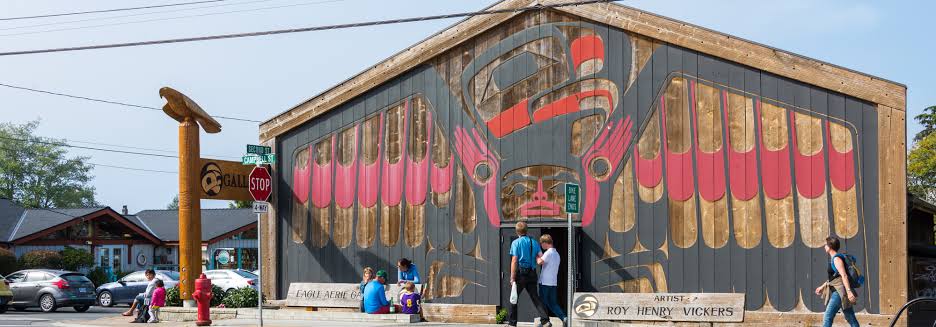As of July 2025, Canada is making significant strides in reshaping its relationship with Indigenous communities by implementing a new, forward-thinking strategy for Indigenous economic development. This comprehensive approach goes beyond traditional funding and support, aiming to empower Indigenous peoples through ownership, autonomy, and long-term capacity building. The strategy aligns with Canada’s ongoing commitment to reconciliation, recognizing that economic inclusion is essential for true equity and partnership between Indigenous communities and the broader Canadian society.
In response to longstanding calls from Indigenous leaders, the new strategy focuses on creating sustainable opportunities, removing systemic barriers, and promoting self-determined economic growth. From infrastructure investments and access to capital, to land stewardship and support for entrepreneurship, this renewed policy direction reflects a more respectful and results-driven model of collaboration.
Empowering Self-Determined Economies
At the heart of the new strategy is the principle of self-determination. Indigenous communities are not simply recipients of economic aid—they are active leaders and decision-makers in how their economies grow and evolve. The federal government has shifted its role from directive to supportive, enabling communities to lead development according to their own priorities, cultures, and values.
This shift is reflected in the creation of Indigenous-led economic development institutions, such as the National Indigenous Economic Development Agency, launched earlier in 2025. This agency provides advisory services, access to funding, and technical support while being governed by Indigenous representatives from across the country. It operates independently of government departments, ensuring communities have full control over planning and investment decisions.
Increased Investment in Infrastructure and Connectivity
A major pillar of the 2025 strategy is the targeted investment in essential infrastructure for Indigenous communities. Many reserves and remote settlements have long struggled with inadequate roads, housing, clean water, and internet access—all crucial elements for economic development.
The government, in collaboration with Indigenous infrastructure boards, has committed over $4 billion between 2025 and 2030 to improve transportation links, renewable energy solutions, clean water systems, and broadband expansion in First Nations, Métis, and Inuit territories. By focusing on infrastructure, the strategy enables communities to attract investment, support local business ventures, and connect to broader markets, both within Canada and internationally.
Supporting Indigenous Entrepreneurship
Entrepreneurship plays a critical role in Indigenous economic renewal. The new strategy expands support for Indigenous-owned small and medium enterprises through funding, mentorship, and business development training. Programs such as the Indigenous Entrepreneur Fund and the Indigenous Innovation Accelerator are giving rise to a new generation of business leaders.
From eco-tourism ventures and digital platforms to resource stewardship and arts-based enterprises, Indigenous entrepreneurs are finding innovative ways to balance profitability with cultural integrity and environmental responsibility. Special attention is also being paid to support youth and women in business, recognizing their essential role in community development and intergenerational economic growth.
Enhancing Access to Capital and Credit
A longstanding barrier to Indigenous economic development has been limited access to financial capital. Due to restrictions on land ownership and systemic barriers within banking systems, many Indigenous businesses have historically faced difficulties securing loans and investment.
In 2025, the federal government partnered with Indigenous financial institutions to create the Indigenous Capital Access Program (ICAP). This initiative provides low-interest loans, equity investment opportunities, and loan guarantees to Indigenous entrepreneurs and communities. It also strengthens the role of Aboriginal Financial Institutions (AFIs), which are uniquely positioned to serve Indigenous clients with culturally appropriate lending practices.
Through ICAP, communities can invest in large-scale projects—such as clean energy installations or manufacturing plants—that generate employment and revenue for generations.
Strengthening Resource Revenue Sharing and Land Rights
Canada’s new economic strategy also includes modernizing resource revenue sharing agreements and recognizing Indigenous rights over land and natural resources. Recent updates to the Impact Assessment Act and the Natural Resources Transfer Agreements have formalized Indigenous participation in resource projects, ensuring they are not only consulted but also financially compensated and involved as equal partners.
Several provinces, including British Columbia and Saskatchewan, have already signed new resource agreements that provide Indigenous nations with a fixed share of revenues from mining, forestry, and energy development within their traditional territories. These revenues are reinvested in community infrastructure, education, and social services, contributing to long-term sustainability.
Moreover, the government has committed to accelerating land claim settlements and supporting land management initiatives that give Indigenous communities more direct control over their lands.
Promoting Skills Development and Employment
Another core objective of the 2025 strategy is building human capital within Indigenous communities through skills development and workforce integration. The Indigenous Workforce Transition Program, launched this year, is designed to connect Indigenous workers with high-demand sectors such as healthcare, green technology, construction, and digital services.
This program provides funding for vocational training, apprenticeships, and job placement services, all tailored to the cultural and social contexts of Indigenous learners. Partnerships with colleges, universities, and industry associations ensure that training programs are up to date with market needs and offer real career pathways.
In tandem, government contracts now include stronger Indigenous hiring requirements and procurement policies that prioritize Indigenous suppliers and service providers.
Measuring Impact and Ensuring Accountability
Unlike previous top-down approaches, the 2025 strategy emphasizes transparent monitoring and community feedback. Indigenous-led advisory boards work alongside federal agencies to measure the impact of initiatives based on locally defined success metrics.
Annual progress reports and independent audits are made publicly available, and communities are empowered to propose changes or recommend new programs. This commitment to accountability helps build trust and ensures the strategy remains responsive to evolving needs.
Conclusion
Canada’s new strategy for Indigenous economic development marks a meaningful departure from past practices by placing Indigenous voices at the center of policy design and implementation. By promoting autonomy, investing in infrastructure, expanding access to capital, and recognizing land rights, the strategy supports a foundation of long-term prosperity grounded in cultural strength and self-determination.
As of July 2025, Indigenous communities are not just participating in the economy—they are actively reshaping it on their own terms. The path forward involves continued collaboration, mutual respect, and the recognition that economic reconciliation is both a moral and practical necessity for a stronger, more inclusive Canada.



